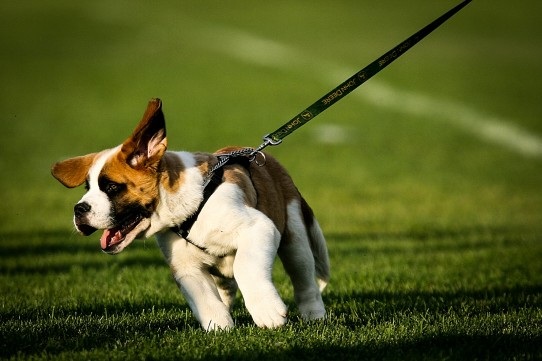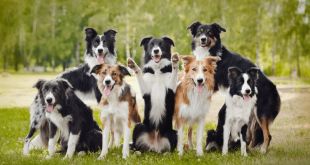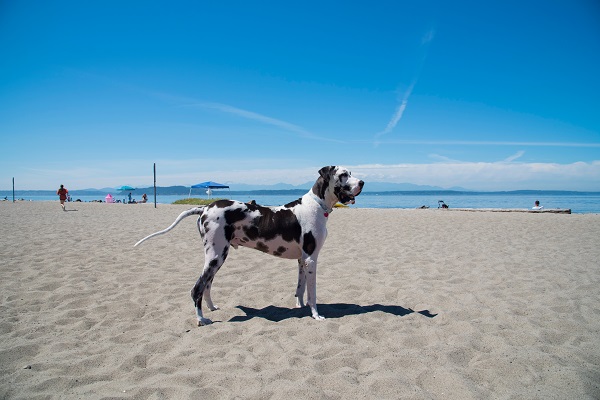If your dog is very reactive on a leash, it must be quite an annoying feeling for you. There are dog owners who do not bother about the leash. They permit their dogs without a leash and no recall. They discover themselves in a safe area to relish the outdoors, with the dogs taking jobs, prowess, and drafting. Their dogs may be trespassing in other regions.
Then when you ask them to leash their dogs, they will say they are reactive to the leash. But leash reactivity can be handled if taken care of properly. You have to understand the reactive dog’s behavior more than a mannered behavior dog.
Primarily, you have to understand the situation and even the reason for the nature of leash reactiveness. Then you have to chalk out a plan according to the necessity.
The reason behind the reactivity of the leash
Typically, the dog reacts out of frustration or fear. Anxiousness and anxiety are the causes of leash reactivity. A fearful and anxious dog will show signs of reactivity. They can create a stir to distance them from the trigger. The first thing is determining which objects make the dog reactive and which do not.
Also, it would be best to segregate the symptom specifically and what increases the reactiveness. Most important is when it turns out in an ugly way. You have to minimize or prevent it from being out of reach. First, you have to differentiate between an aggressive and a reactive one. Most often, we misunderstand reactiveness as aggression.
If you identify the situation, you can help me find a solution. If you allow their trigger to increase their reaction, it gradually turns into aggression. You have to know how to control their response before it worsens. This way, you can stop the attack. Here we can define reactiveness as an enhanced situation of excitement due to some stimulation.
Some common stimulants are bikes, cars, people, and other dogs. The dogs become aggressive when their body reaction is ignored. Moreover, when the motivation is still present, generally, this situation worsens in the case of scared dogs. Could you take the dog away from that situation in such a case?
The primary purpose of the dog owner is to identify the stimulant and response and put a stop to this feedback to turn it into the worst situation.
Some of the symptoms of leash aggressiveness
- licking of lips,
- stiffening the body,
- looking intensely,
- showing vicious teeth display and
- lunging
- growling
- barking
- whining
- exhibiting exaggerated ear and tail display.
If this aggressive nature continues without cause, it’s better to consult a vet for medical purposes.
Signs of leash reactivity
Due to annoyance and panic, dogs react toward the trigger. They behave in such a way to keep the motivation far away from them. Annoyed dogs act this way because they need things they cannot have in them. That is the reason they outburst themselves.
You may notice they are more responsive in the leash and not so much in out-of-leash condition. The reason is that they have the option to move from this situation. Some of the symptoms of leash reactive nature are:
- lunging,
- barking, growling,
- whining, and
- redirecting frustration onto the handler.
Your sole purpose is to develop tolerance toward this stimulus for your dog.
Source of leash sensitivity
Sometimes owner creates this sensitivity unknowingly. Another reason behind this behavior is the shyness of scared and stressed dogs. Fear-based leash dogs are more reactive to fighting because they can’t leave the situation.
They are tied with a leash. So, the only way out for them is fighting. Diffident dogs want to keep their stimuli far from them.
Acknowledgment on leash
Generally, dog owners allow greeting each other dog on a leash. It increases leash reactiveness. They greet each other face-to-face, which is rude and not a good gesture according to their nature. If they are uncomfortable with one another, the leash cannot allow them to move away. That is why you shouldn’t go for a leash greeting.
Lack in Direction
If you allow your dog to smell in freedom, permit them to create pull on the leash and do anything according to their wish, which sends him an indication that you are a protector. It’s a good practice to guide their walk and insist on a particular line omitting the surrounding.
Socialization
Improper socialization also makes them reactive to the leash.
Tips for Hiking with Leash Reactive Dogs
Leash reactivity is a common behavioral problem in pets, especially dogs. However, you must be aware of those things that trigger leash reactivity. Could you keep a distance between your dog and stimulants? These stimulants can be either new people or other animals.
Find them before your dog finds them. Make your pet sit beside you when meeting new people or other animals. Be aware of the dog’s signal of reactiveness.
Keep aside trail and place yourself between your dog and other dogs. If another dog is in unleashed condition, you have to keep your dog to stay put. Make yourself a commander to him.
Using a muzzle is a good indicator. Also, choosing a little-traffic hiking route is a good option. It will help to prevent some unwanted situations from taking place.
You can also use a stick or pole to protect the dog from others. Also, avoid retractable leash. Use food rewards when your dog behaves appropriately.
Conclusion
With proper training and preparation, hiking with a leash reactive dog can be a rewarding experience. By implementing effective strategies and prioritizing safety, you can overcome reactivity and enjoy outdoor adventures together.
FAQs
Q: What causes leash reactivity in dogs?
A: Leash reactivity in dogs can be caused by fear, frustration, previous negative experiences, lack of socialization, or a strong prey drive.
Q: Can leash reactivity be cured?
A: While leash reactivity may not be eliminated, it can be managed and improved through training, desensitization, and counterconditioning techniques.
Q: Should I avoid hiking with my leash-reactive dog?
A: Hiking with a leash reactive dog is possible with proper precautions, training, and management strategies. Assess your dog’s behavior and comfort level to make informed decisions.
Q: How can I prepare my leash-reactive dog for hiking?
A: Gradual exposure to outdoor environments, training exercises, and socialization can help prepare your leash-reactive dog for hiking. Consult a professional dog trainer for guidance.

 DogExpress
DogExpress





















 in Chandigarh, India.
in Chandigarh, India. 
